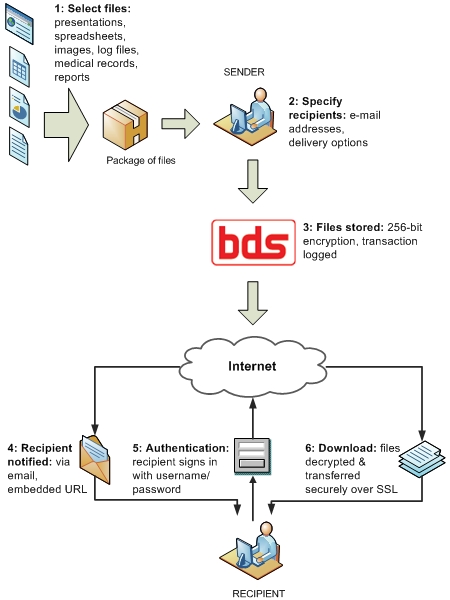
About Sickkids Secure File Transfer
What's the primary purpose of SickKids SFT?
SickKids secure file transfer, is an enterprise-class secure and managed file transfer ( SFT ) solution that secures and tracks large and confidential files. It enables users to exchange and transfer large files easily and securely with colleagues, customers, partners, and other third parties while maintaining a complete transaction and audit trails important for regulatory compliance. It is a client-less, web based secure file transfer solution that enables secure, authenticated, point-to-point of files and messages. Files of any size and type are securely stored to the server and email notifications are sent to recipients notifying them that a delivery is waiting. Recipients follow a link in the email message, register and login, and then access their secure delivery. With Web, Outlook, and a user friendly interface, the solution provides ease-of-use, security, and a complete audit trail for file transfer and secure messaging needs. The solution provides the ease of use required by employees while providing the security required by the enterprise.
Does it require client software on the workstation?
No, it client-less, does not require any special client software to retrieve a delivery, it can be adopted easily by any partners, customers, and 3rd parties. An Outlook add-in provides email attachment management to send large or confidential files directly from Outlook.
What type of content could be used and how secure is it?
Any kind of content that is related to SickKids business activity, including PHI could be sent through SickKids SFT. This solution is not for personal use, and all the activities on the secure ftp site are subject to all the Sickkids policies. The solution uses multiple layers of security, from user authentication, encrypting all Web traffic ("in transit") though SSL, and encrypting the files while stored ("at rest") using the NIST-approved AES 256-bit encryption algorithm. All data has a default 7 day expiration period and will be automatically deleted after 7 days. However, the user could assign an expiry date shorter than the default one to automatically delete the data after such date. The user could also protect the transfer transaction by assigning a password to the file and the recipient will not be able to access it until he gets the password from the sender.
What's the maximum files size I can upload?
There is no theoretical limit to the file size you can upload – the only constraint is the throughput of the network. The larger the file is, the longer it takes to upload and download.
What's the difference with OneMail, xShare SharePoint .
With OneMail you can only send files to OneMail users and less than 10 MB large, SFT does not have this limitation. With SFT you can send larger files and to anyone external to SickKids.
However, SFT is not a collaboration tool, for such purpose xShare SharePoint should be used.
How are new users set up?
New users should contact the Help Desk to create a ticket and assign it to the appropriate group. Please note that users who do not use the system frequently will expire and have to be re-activated again in order to use it. It takes one business day to have the account created or re-activated.
How to request re-activation of an account?
Contact Help Desk and issue a ticket for re-activation of the account.
Is there a charge to have an account ?
No, there is no charge to the user for having an account. However, the user needs to specify justification for the request, and we have limited number of licenses. Hence we will actively expire inactive accounts.
Reporting and Tracking
Every transaction that occurs in the application is being logged, and reports could be generated for user activity, download activity, file transfer activity to identify the sender and recipient of the files, and the time when recipients actually retrieved the file.
How it works
1. A sender selects files, documents, and other electronic media to deliver.
2. The sender enters the email addresses of the recipients of the package of files, and optionally enters a secure message.
3. The application encrypts the files and logs the delivery transaction.
4. Recipients are notified through an email message with an embedded URL.
5. Recipients signs in to the Server Web application.
6. Recipients can view the secure message and download files and the sender receives an email notification that the delivery has been viewed.
